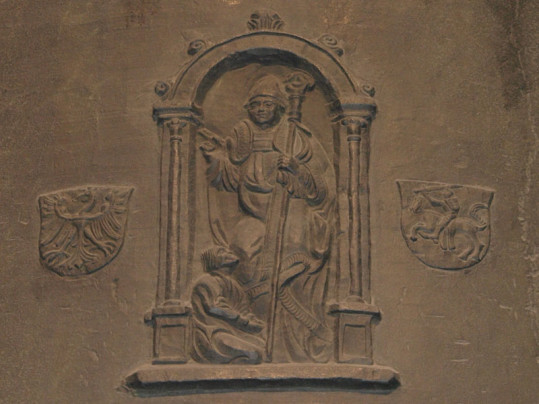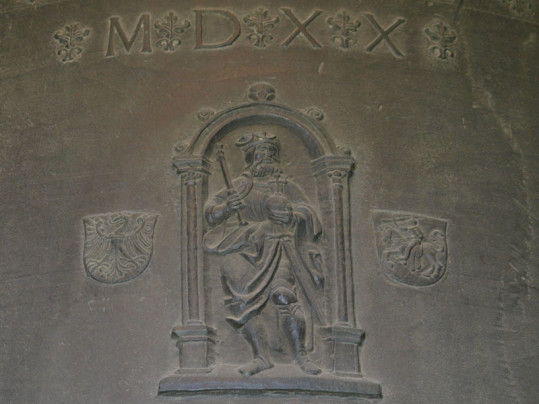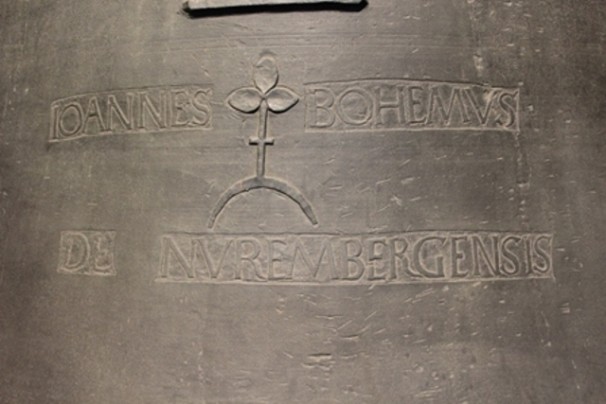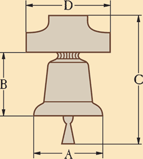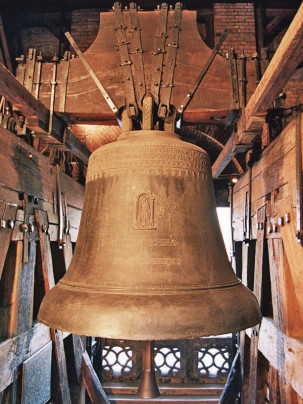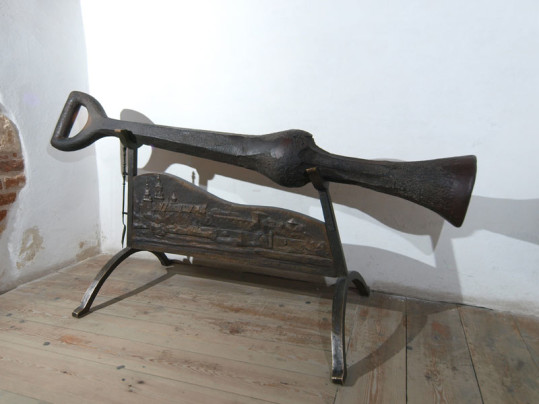This bronze colossus was cast in Cracow in 1520 by a Nuremberg founder, Hans Behem. The bell was hung in one the Wawel Castle’s old defensive towers which was made taller to house the bells. Cracovians had the first opportunity to hear the Sigismund bell ringing for the first time on the 13th of July 1521. The bell was commissioned by King Zygmunt (Sigismund) I the Old, whose idea was that it will “ring not only to the glory of God Most High, but also to the glory of the House of Jagiellons and the Polish Kingdom”. During the times of Poland’s bondage, the Sigismund Bell was one of the most important national symbols.
Initially, the bell was called magna campana regia (royal big bell), because it was dedicated to many saints – patrons of the founder king. Later it was called Sigismund, the name of the main patron saint of the king, or the Sigismund Bell, referring to the founder – King Sigismund I the Old.
The upper part of the bell’s body contains a Latin inscription which reads:
DEO OPT[IMO] MAX[IMO] AC VIRGINI DEIPARAE SANCTISQVE PATRONIS SVIS DIVVS SIGISMVNDVS POLONIAE REX|CAMPANAM HANC DIGNAM ANIMI OPERVMQVE AC GESTORVM SVORVM MAGNITVDINE FIERI FECIT ANNO SALVTIS below is the date: MDXX.
- Plaque with St Stanislaus – Sigismund Bell (detail)
- Plaque with St Sigismund – Sigismund Bell (detail)
It can be translated into Polish as follows:
FOR GOD, THE BEST, THE GREATEST, FOR THE VIRGIN MOTHER OF GOD AND FOR HIS PATRON SAINTS, THE ILLUSTRIOUS KING ZYGMUNT OF POLAND HAD THIS BELL MADE TO BE WORTHY OF THE GREATNESS OF HIS MIND AND DEEDS IN THE YEAR OF OUR LORD 1520.
Below are two plaques: one featuring St Stanislaus and another featuring St Sigismund, the King of Burgundy, the latter fully clothed in armour and a cloak with the insignia of his royal power. The plaques are flanked with national emblems of the Commonwealth of Two Nations: the crowned eagle of Poland the coat of arms of Lithuania (Polish: Pogoń, Lithuanian: Vyitis). Below is the name of Behem in Latin and German and his sign (gmerk), as well as the year the bell was manufactured.
- Hans Behem’s gmerk
Inside the bell’s body hangs a fine Renaissance clapper with traditional Ghotic ornaments (flunting). It is attached to the iron fitting using a belt made of calf leather, which in its thickest part consists of twelve layers of leather. The clapper consists of the part on which the clapper is hung, a shaft and a metal part which strikes on the sound-ring, i.e. the thickest part of the bell’s body. At the end there is the clapper’s drive which gives it the right swinging speed. The clapper of the Sigismund Bell, like a violin string, generates the tone of this fine idiophone. Its sound is F-sharp in the Great Octave.
It can be said that Sigismund is the king of Polish bells and the ruler of Polish hearts. For half a millennium this instrument has marked important moments in history of the Polish nation and that of Europe. At the time it was made, the Republic of the Jagiellons played the leading role in the politics of the countries in the heart of Europe and influenced an area spreading to the ends of the continent. Later, during the difficult periods of bondage when the occupying powers erased the name of Poland from the map of Europe and consciously destroyed Polish regalia, the Sigismund Bell became one the most important national symbols.
THE SIGISMUND BELL – TECHNICAL DATA
Dimensions:
A. Diameter of body – 242 cm
B. Height of body with crown – 241 cm
C. Full height of bell- 460 cm
D. Spread of the oaken yoke – 308 cm
E. Clapper length – 220 cm
WEIGHT:
Bronze body – 9,650 kg
Oaken yoke with fittings – 2,160 kg
Clapper with belt – 365 kg
Other parts – 425 kg
Total weight of bell – 12,600 kg
TRIVIA:
Powered by 12 bell-ringers
Basic tone – F-sharp
Audibility range – 30 km (ca. 18,6 miles )
- The Sigismund Bell
Old clapper of the Sigismund Bell
- Old clapper of the Sigismund Bell
The first original clapper of the bell, made of iron. It is 218.5 cm (86 in) long and weighs 323 kg (710.6 lbs).
It rang for the first time on the 13 July 1521, on St Margaret’s day.
It worked for 479 years and performed some 12 million strikes.
In the 19th century it broke and was repaired three times.
It rang for the final time on Christmas Day 2000, and it was then that the fourth crack was noticed.
The damaged clapper was replaced with a new one that has been in use since the 14th of April 2001.

